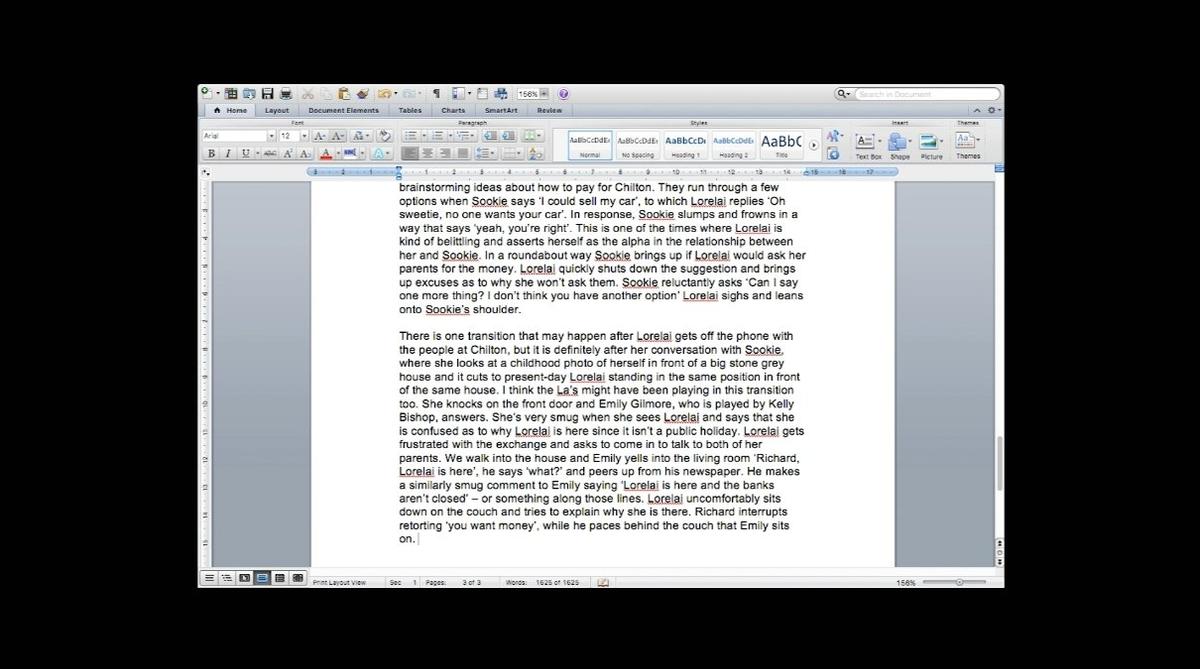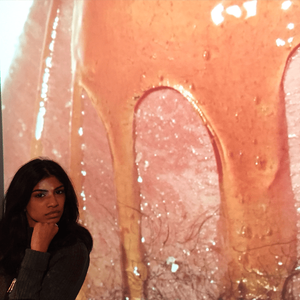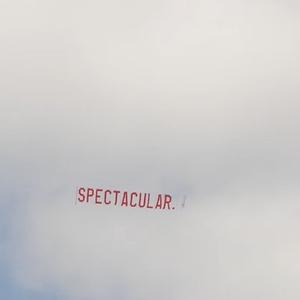Curated by Laura Duffy, worth your while is an installation for public art space Masons Screen. Featuring works by Elisabeth Pointon and Dilohana Lekamge, worth your while examines self care within the day-to-day environments of work and home.
In Dilohana Lekamge’s Pilot - Gilmore Girls: Season 1, Episode 1 (2018) the artist writes out the entire script of the first episode of American TV comedy-drama Gilmore Girls by memory, but re-adjusts the white lens to accommodate her perspective as a Sri Lankan New Zealander. Pointon’s work pairs an inflated air-dancer named Crystal with an adapted family meditation. Both video works are absent of, but rework the lens through, the experiences of brown bodies.
In this interview with Leakamge and Pointon, Duffy asks the artists about the intersection of work & leisure; scrutinising one’s own productivity; and what it means to show these works in Masons Lane.
Laura Duffy (LD): I wanted to begin by asking you both to describe your practices and how they’re informed by your non-art lives?
Elisabeth Ponton (EP): Under the guise of "double agent"—defined in as having a day job (as the Bookings Coordinator at a luxury car dealership)—that feeds into my art, my practice investigates how shared spaces are becoming sites for communal isolation. I consider the implications of championing artistic spirit into the work environment, in an attempt to overturn the dominant corporate language, and the power attributed to it. In my workplace, the drive for profit is used to shape our cultural environment, and our relationships with one another. I attempt to re-shape the workplace into a micro-utopic community through “the big, romantic gesture of art,” employing public intervention, performance, sculpture, text, and video made in collaboration and discussion with my colleagues, as points of departure to activate our public spaces. Over the past year, my position as Bookings Coordinator has been re-configured to include "Official Artist in Residence." My boss appointed it to me when I got my MFA, and suggested I work four days a week in order to have a studio day, to maintain my art-making. The philosophies and practices that form the central tenets of my research stem from parents—my Hindu, Fijian-Indian mother, and my dad.
Dilohana Lekamge (DL): I’m an artist and art writer. Along with Laura, I’m on the team of facilitators that runs MEANWHILE, an artist run space in Te Whanganui-a-Tara. I usually make work about New Zealand multiculturalism, and being Sri Lankan in New Zealand. But I’m allowing my work to have a bit more freedom and letting it shift slightly. I’m trying to find new ways in which to explore these ideas in ways that are less explanatory.
LD: The idea of therapeutic or mediative action is present in your works. Can you talk to that a little more, is that important in your process of art making?
EP: My job was only supposed to be for a month as I needed something to do to support myself, after graduating and returning from overseas. At the end of the month they offered me a full time contract. At this time, I was the youngest, a brown, queer, female, and to top it off, an artist which immediately placed me as an outsider. A lot of the discomfort I experienced personally in the workplace stemmed from this. Making art about it simply made sense, and it was a sort of reclamation of autonomy. However, I began to notice that I had an outlet for what I was experiencing at work, and a lot of my colleagues didn’t, and I realised that perhaps I could do something with and for them, which would benefit us all—or at least attempt to. I guess a sort of art as therapy type situation. I realise there is so many problems with the “artist re-imagining the world around them,” and it is difficult territory to navigate. Sometimes I think it as simple as the beauty and power of the attempt, and everyone simply spending time together.
DL: For me, my work is therapeutic. For a period of about 4 years I watched Gilmore Girls in all of my spare time. I ended up watching all of the seasons on repeat multiple times. I wanted to make use of the arbitrary knowledge that I gained by watching it so much. Initially I started writing the plot by memory as a silly project and a way to kill time in a similar way to when used to watch the show. I’ve written a few of the episodes and hopefully I’ll be able to do something with it when I’ve finished all of the seasons—not including the Netflix revival, since that wasn’t around when I was habitually watching the show.
LD: Would it be appropriate to say that these works are both absent of brown bodies, but operate through the lens of brown experience?
EP: Crystal is definitely a white body, but it’s kind of weird though—because Crystal became my voice/an extension of me, that could occupy spaces in a way I couldn’t. I removed my own body from the conversation because I was so sick of talking about it. Crystal was originally intended to be used to critique, but the inflatable air dancer is such a symbol of freedom—they literally look like what it would feel like to win lotto, and I realised there was so much that could be done with that.
A Guide To: Effective Implementation of Self-service (2017) Elisabeth Pointon
DL: It’s gets boring when you’re constantly explaining to a majority audience what your practice is, why you are making a certain kind of work, and the perspective from which you’re making the work from. With this work I don't really have to do that as much since I’m not talking to a specific Sri Lankan New Zealand experience, nor do I have to explain the purpose of using my body in a more traditional performance art piece.
Gilmore Girls has characters and experiences I can’t relate to at all, which is a big part as to why I could watch it on repeat and almost completely shut off.
We are constantly taking in white experiences, white media. I remember when I first watched The Mindy Project, I was like “why the fuck am I in my 20’s and this is the first time I’ve seen someone that looks like me on T.V. that doesn’t completely rely on a South-Asian stereotype?” The whole time I’ve been seeing Ross and Rachel run around and not really understanding what was happening. The characters and how they related to their friends and family made no sense to me. My video touches on that outsider position of me and many brown people, for the majority of our lives we only really have access to white film and television.
LD: Could you talk about the process of making the video?
EP: I think the video for me is probably the most physically strenuous work I've made in a long time. Everything I typically make is generally ordered online, which my flatmate Robbie likes to remind me. This was me trying to figure out how to use a camera and Premiere, it was really hard. However, a fair few of my colleagues witnessed the labour—my manager allocated me half an hour to use the workshop to film, and so the technicians and groomers stopped for that time. After seeing the video in its draft phase, I walked into the workshop to see a few of my colleagues dancing like Crystal. It was so balletic, beautiful, and so soft. This was one of the most significant works in terms of “buy in” from the people who work with me, being like "Oh she’s ACTUALLY an artist”—they’d only see the objects and things I had ordered and delivered to work...
LD: How do you see your work functioning in Masons Lane?
EP: I think when you are in business mode, you are almost on auto-pilot and in a state of disconnect—and this area is very corporate. There is a numbness to it, and it kind of spooks me out because I realise how much time I can kind of spend in that state of I guess waking sleep. This video was initially made to aid this in my workplace, informed by the instructional videos we were showed in our meetings. It incorporates the same affirmative tone and language, totals only two and a half minutes—enough time to be viewed in a workspace, without cutting into ‘business time. Maybe people will partake? Maybe they will hum the song for the next few days?
DL: (My piece) is on a word doc, which I think is a crack up. When you think of documents you must think that it's something important or at least work related. It’s as if I’m working on a screenplay, but I’m actually recalling the synopses to all episodes of Gilmore Girls.”


